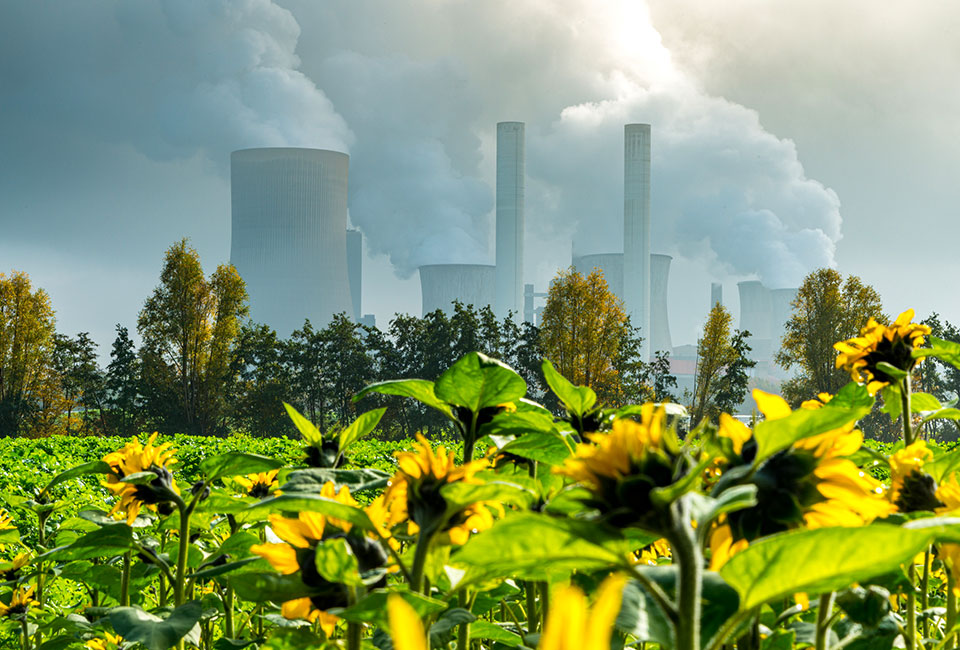
Loopholes in the Montreal Protocol cause emissions of five ozone-depleting chemicals to increase rapidly between 2010 and 2020. These have a significant greenhouse effect.
Emissions of five ozone-depleting chemicals whose production has been banned for most uses under the Montreal Protocol increased rapidly between 2010 and 2020. That's according to a new study by the Swiss Federal Laboratories for Materials Testing and Research (Empa). Emissions of these five chlorofluorocarbons (CFCs) arise in part from leakage during the production of ozone-friendly substitutes. Although such emissions from by-products or intermediates are allowed under the Montreal Protocol, they run counter to its goals - and the observed increases are cause for concern.
Emissions come into renewed focus
CFC emissions from widespread used applications, now banned, have fallen to such low levels that CFC emissions from previously insignificant sources are now on the radar, according to Luke Western, lead author of the study and a researcher at the 'National Oceanic and Atmospheric Administration' (NOAA) and the University of Bristol. He adds, "These kinds of emissions are now coming into our focus because the Montreal Protocol has been so successful."
Emissions have a significant greenhouse effect
According to the researchers, emissions of these CFCs do not currently pose a significant threat to the recovery of the ozone layer. However, the current increase could make them a significant contributor to total emissions of ozone-depleting chemicals in the future. Because they are potent greenhouse gases, they also have an impact on the climate: according to the study, their total emissions are equivalent to the CO2 emissions of a smaller country like Switzerland in 2020, which in turn is equivalent to about one percent of total greenhouse gas emissions in the U.S., or 1/1,000 of global greenhouse gas emissions.
Montreal Protocol has loopholes
CFCs are chemicals that destroy the Earth's protective ozone layer. They used to be used extensively in the manufacture of hundreds of products, such as aerosol sprays, blowing agents for foams and packaging materials, and solvents and refrigerants. The production of CFCs for these purposes was banned in 2010 under the Montreal Protocol. However, the international treaty does not ban the use and creation of CFCs in the production of other chemicals, such as hydrofluorocarbons (HFCs) and, more recently, hydrofluoroolefins (HFOs), both of which were developed to replace CFCs.
Concentrations are record-breaking
In the study, the research team used measurements from 14 sites around the world, including stations in the AGAGE ("Advanced Global Atmospheric Gases Experiment") network such as the one operated by Empa on the Jungfraujoch, and an atmospheric transport model to show that the abundance and emissions of these CFCs in the atmosphere have increased worldwide after their production for most uses ceased in 2010, even reaching record levels in 2020.
The researchers noted that the increased emissions of three of the CFCs studied - CFC-113a, CFC-114a and CFC-115 - may be due in part to their role in the production of two common HFCs used primarily in refrigeration and air conditioning equipment. "Since the most likely source of these compounds is currently byproducts of the HFC industry, there is concern that emissions of these CFCs may continue to increase given production projections for some new generation HFC products," said Martin Vollmer of Empa, one of the study's co-authors.
By contrast, the causes of the increase in emissions of the other two CFCs, CFC-13 and CFC-112a, are less clear. Says Vollmer, "We are not aware of any current fluorocarbon chemical process in which these two substances occur as an intermediate or byproduct."
Time for a tightening of the Montreal Protocol?
The researchers were unable to determine where the emissions were coming from; while they documented the increase in global emissions, they were unable to identify specific source regions. One of the reasons for this, according to Stefan Reimann of Empa, another co-author of the study, is the numerous "blind spots" in the global monitoring network: "Even though this study combined measurements from different networks and groups, we have hardly any measurement data from several regions of the world, including those with the largest global fluorocarbon production."
If emissions of these five CFCs continue to rise, the effects could reverse some of the progress made under the Montreal Protocol - and contribute significantly to global warming, the researchers say. The study authors note that emissions could be reduced or avoided by reducing leakage associated with HFC production and by properly destroying all co-produced CFCs. "Given the continued increase of these chemicals in the atmosphere, it may be time to consider tightening the Montreal Protocol," says another co-author of the study, Johannes Laube of Forschungszentrum Jülich. One conclusion of the study, says Luke Western, is that the production processes for some of the CFC substitutes may not be completely ozone-friendly, even if the substitutes themselves are.
About the study
The new study focused on five CFCs that currently have few known uses-CFC-13, CFC-112a, CFC-113a, CFC-114a, and CFC-115-and have atmospheric lifetimes ranging from 52 to 640 years. In terms of their impact on ozone, emissions from these five CFCs are equivalent to about one-tenth of current emissions from CFC-11, one of the most widely controlled substances in this group.
The study, conducted by an international team of scientists from NOAA, the University of Bristol, Empa, CSIRO, the University of East Anglia, the University of California San Diego, the University of Colorado at Boulder and Forschungszentrum Jülich, was published this week in the scientific journal Nature Geoscience.